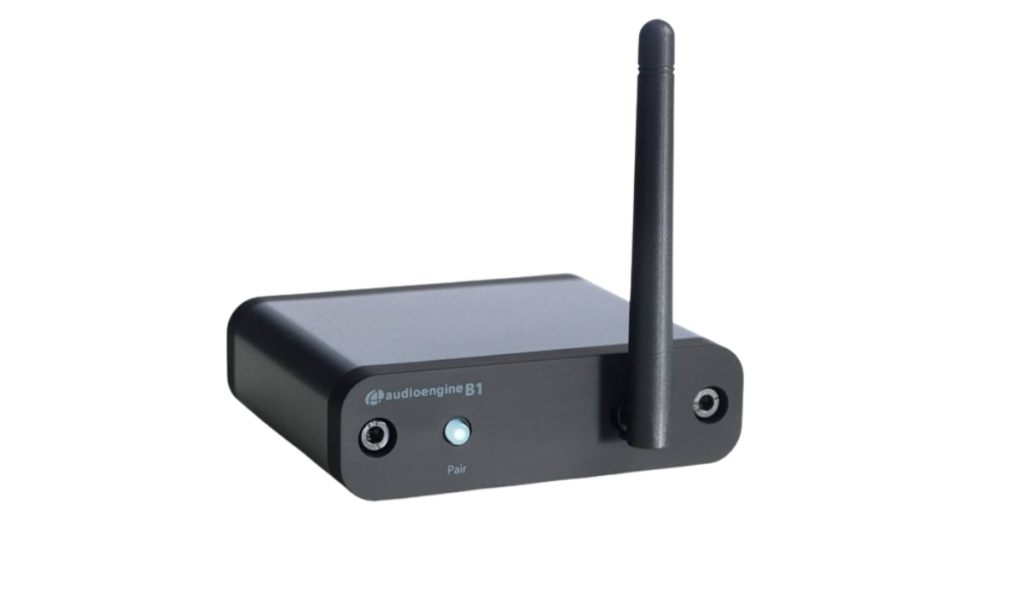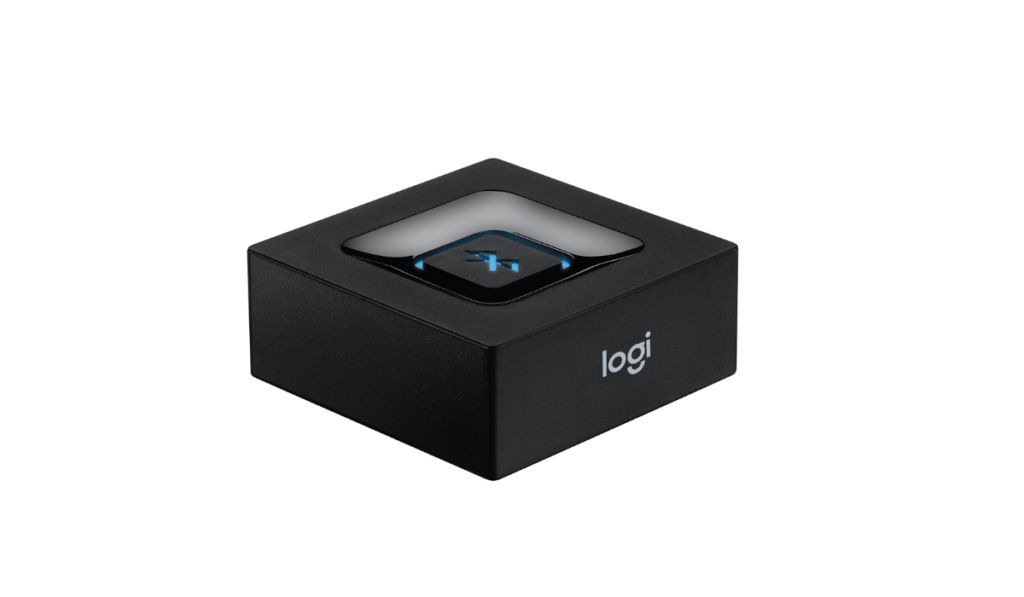There are a lot of different Bluetooth receivers on the market. Not all of them are intended for home theater sound, so you need to know what you are looking for before you hit that order button.
Some of the Best Bluetooth Audio receivers are the Audioengine B1 for high-quality audio and the budget-friendly Logitech Bluetooth Audio Receiver. For installation, connect the receiver to your system using matching cables, pair it with your audio source, and adjust the settings for optimal sound.
In this article, we will mention top picks for Bluetooth audio receivers, while explaining the importance of system compatibility, audio output type, and power source. Additionally, we will cover simple installation instructions for integrating the receiver into your home stereo system, ensuring an enhanced wireless audio experience.
Best Bluetooth audio receivers and their qualities
If you're pursuing an entirely wireless home theater (our guide), one of the best places to start is adding Bluetooth receivers. They can be used in various settings, for making regular speakers Bluetooth or even for an old stereo you might have. In this section, we'll explore some of the most recommended Bluetooth audio receivers. We will explore high-quality options as well as budget-friendly ones.
Audioengine B1 Bluetooth Audio Receiver

The Audioengine B1 Bluetooth Music Receiver(on Amazon) combines simplicity with high-quality audio. It features the latest Bluetooth 5.0 for stable, high-resolution audio streaming and uses technologies like aptX HD and AAC for superior sound.
With multiple connection options, it easily connects to speakers or TVs, supporting both analog and digital audio. The B1 is user-friendly, requiring no special apps or software for setup, operates efficiently at 5V, 200mA, and offers a 100ft (30m) range.
Logitech Bluetooth Audio Adapter

The Logitech Bluetooth Audio Receiver(on Amazon) offers easy-to-use, basic Bluetooth audio streaming. It uses Bluetooth 3.0 for a stable connection and has a wireless range of up to 65 feet (20 meters).
This receiver supports Bluetooth for input and provides L/R RCA and 3.5mm Aux ports for output. It's straightforward with no software needed for setup. The device requires a 5.0 V, 150 mA power adapter and comes with a 5.5 feet (1.7m) cable, but does not include a remote control.
A High-Quality Bluetooth Adapter Option
One of the biggest issues with Bluetooth for audio is the signal strength. If you want the best hardware you can get to try and mitigate the possible issues with wireless Bluetooth signals, you want a unit like the Avantree Oasis Plus Bluetooth 5.0 Transmitter Receiver (on Amazon), for example.
The Bluetooth 5 feature will be critical to your signal strength, and this unit also pulls an impressive triple duty by being a Bluetooth broadcaster and receiver (more on Bluetooth 5 in our comprehensive guide).
So it solves your receiver problem, while also adding more functionality by routing sound to other devices such as from your TV to a pair of wireless headphones.
A More Budget-friendly Option
Luckily Bluetooth technology is pretty well understood at this point, and pretty cheap to implement. Units like this sinking Bluetooth Audio Adapter (under 25$ on Amazon) are an excellent budget-friendly option that can take in your Bluetooth signals and convert them to left and right-channel sounds without coming close to breaking the bank.
This option is limited by the low number of channels, but that's the devil's bargain of Bluetooth convenience – that wireless signal just can't carry all the channels.
Choosing the Right Equipment
This section provides some of the most important things you might want to consider before purchasing a Bluetooth receiver, such as compatibility with your system, types of audio output, and the power source required, as Bluetooth receivers come in two varieties: battery-powered and wall-powered.
- Compatibility with Your System:
- Ensure the receiver's output plugs match the input plugs of your A/V or stereo receiver.
- You'll need an appropriate converter cable if the plugs don't match.
- Type of Audio Output:
- Most Bluetooth receivers have analog audio output.
- If your system only has digital inputs, you may need a converter unit that supports this.
- Power Source:
- Battery-Powered Receivers: Ideal for car radio inputs. They offer portability with fewer cables but require periodic recharging or battery replacement.
- Wall-Powered Receivers: Best suited for home theater systems. They offer low maintenance once set up, but you might need an extension for your surge protector.
How to Install a Bluetooth Receiver

Adding Bluetooth to your home theater system including your TV (our guide) can allow you the ability to play DJ right from your phone. The good news is these steps are very simple and will be the same for any Bluetooth receiver you find.
To install a Bluetooth receiver, follow these steps:
| Steps | Actions To Take |
|---|---|
| 1. Choose the Hardware | Review and choose a Bluetooth audio adapter (like this one on Amazon), which will be compatible with almost every receiver. |
| 2. Connect the Bluetooth Adapter to the Receiver | Use the red and white A/V (RCA) cables to connect the Bluetooth adapter to your receiver. Match the colors of the cables to the adapter and receiver ports. |
| 3. Connect a Device to the Bluetooth Adapter | Power on the Bluetooth adapter and pair it with your audio source (like a phone or computer) using Bluetooth. |
| 4. Power On and Test | Turn on the receiver and test the setup. If there's no sound, check the manual to change the receiver's input to the correct channels. |
Two Ways to Set Up a Bluetooth Receiver
But there are actually two ways to connect a Bluetooth receiver to your home theater. Which you choose will depend on how you intend to use it. This may determine the equipment you need. So, determine which method you are using first before you start making purchases.
Separate Channel (Safest Way)
To set up a Bluetooth receiver safely, connect it to the audio inputs of your receiver using appropriate cables for the right and left channels. Start with a low volume on your device and gradually increase it. This method integrates sound through your home theater, allowing consistent and controlled volume levels, ideal for gatherings.
HT Bypass (Best Sound)
Some A/V or stereo receivers have an HT (home theater) bypass feature. It enables you to bypass the preamp stage, sending sound directly through the power amplifier to the left and right speakers, and subwoofer. This avoids muddy crossover from the center and rear speakers.
This is risky because there is no processing done by your unit whatsoever. That means that your volume control comes entirely from the volume of the audio itself. So if you accidentally connect with your phone at full volume, you could damage your speakers.
Drawbacks of Bluetooth
Bluetooth, mainly used for connecting portable devices like wireless headsets, has limitations in home theater systems due to its range and audio quality.
Its typical 30-foot range is suitable for personal devices, but Bluetooth 5's extended range requires compatible devices. Moreover, Bluetooth only supports two-channel stereo sound and often involves multiple conversions between digital and analog signals, potentially degrading audio quality.
Related Questions
Do Bluetooth Audio Receivers Affect Sound Quality?
Bluetooth audio receivers can impact sound quality, primarily due to the compression of wireless transmission, which can lead to a loss of audio fidelity, but it's not common.
The extent of this effect varies depending on the Bluetooth version, supported audio codecs, and the quality of the receiver and source device. Newer technologies and better codecs can reduce this effect, enhancing sound quality.
How Many Devices Can Be Connected To A Bluetooth Receiver?
The number of devices that can be connected to a Bluetooth receiver varies, but typically a receiver can pair with multiple devices, usually around 3 to 8.
However, it can only maintain an active connection with one device at a time for audio streaming. Some advanced models may allow simultaneous connections between two devices.
For related subjects, you won't regret skimming through our articles on pairing multiple Bluetooth headphones to one device, as well as connecting multiple Bluetooth speakers at once.
What Is The Difference Between Bluetooth Transmitter And Bluetooth Receiver?
A Bluetooth transmitter sends audio signals from a non-Bluetooth device (like a TV or stereo) to Bluetooth-enabled devices (like headphones or speakers).
In contrast, a Bluetooth receiver allows non-Bluetooth devices to receive audio from Bluetooth-enabled sources (like smartphones or laptops). Essentially, transmitters send audio out, while receivers allow audio in. If you would like to know more details, take a look at this article.





